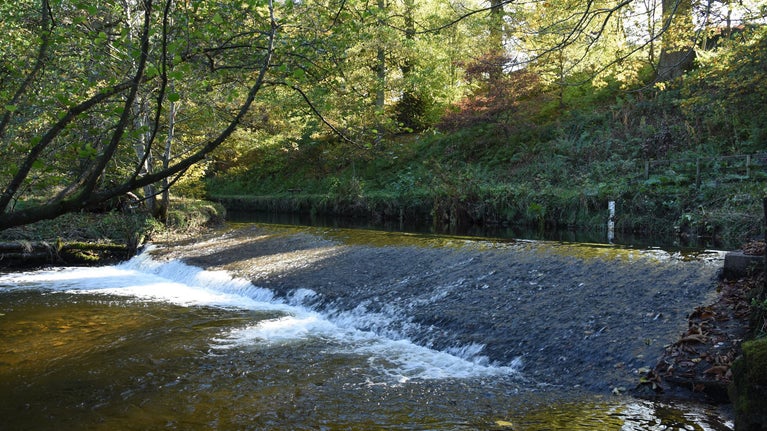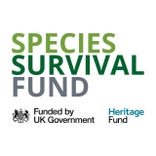Riverlands: Caring for Crowdundle Beck

Rivers are life forces. They’ve helped sustain ecosystems, cultures and communities for millennia, their quiet power steadily shaping everything from landscapes to place names. But many of our rivers are under threat from climate change, pollution, and human-made changes to the landscapes and waterways, which is why the National Trust launched Riverlands.
Crowdundle Beck
Flowing through the estate and powering a historic watermill, Crowdundle Beck is an important part of Acorn Bank’s heritage and unique beauty.
The weir
A weir raises the water level so that it can flow down the mill leat - a small aqueduct - when sluice gates are opened. However, the weir had been gradually eroded by the river and was at risk of collapse. It also presented a significant barrier for fish, who travel upstream each year to reach their spawning grounds.
Over the last few months, the Riverlands team searched for a solution for the weir at Acorn Bank. There were lots of factors to consider, including the poor state of repair of the weir, the need to preserve the water supply to the watermill, and the barrier that the weir posed to fish and other riverine species. The Riverlands team commissioned Dynamic Riverlands as external experts to help us understand what our options were.
In summer 2025, we embarked on a project of scheduled works to deliver a solution to the eroding weir, which will maintain the water supply to the mill as well as improve habitat connectivity in the river. The project was led by Riverlands, our most ambitious freshwater programme ever: aiming to bring our rivers, streams, brooks and becks flowing back to life for the benefit of people and nature.
A solution for people and nature
We worked with partners including the Acorn Bank Watermill Trust, the Environment Agency and Natural England, to develop a solution to these problems. It wasn't an easy fix, but we found a sustainable solution which benefits both people and nature - in August, the Riverlands team and partners successfully replaced the damaged weir with a natural boulder cascade.
The boulder cascade allows fish to move more easily up the river whilst safeguarding the supply of water. The cascade was built using over 800 tonnes of gravel, cobbles and boulders which have been carefully placed along a 45m stretch of river to create a series of cascades and pools. This will better meet the needs of river-dwelling species including salmon, trout and the UK's only native freshwater crayfish, the White-clawed Crayfish.
Oral histories
Part of this work is an exciting oral history project, where memories and stories about Crowdundle Beck, Acorn Bank Mill and the surrounding area were shared by both individuals and community groups. You can listen to the interviews on this webpage, or head up to Acorn Bank and wander through the woodland, where the interviews are waiting in special wind-up boxes.
A new VR headset in the entrance hall at Acorn Bank shows six videos, which accompany voice files from the oral history project, so you can experience the scenery around the beck whilst you listen.
This project is funded by the Government's Species Survival Fund. The fund was developed by Defra and its Arm's-Length Bodies. It is being delivered by The National Lottery Heritage Fund in partnership with Natural England and the Environment Agency.
The new boulder cascade - Tom Lindsay
Watch drone footage of the new boulder cascade in Crowdundle Beck at Acorn Bank. This boulder cascade replaced the failing weir, and will allow salmon to reach their spawning grounds, improving their habitat – and habitat connectivity in general – in the river. It's also allowing water to keep powering the historic watermill.
Allow video to play? This page contains content that is published to YouTube.
We ask for your permission before anything is loaded, as this content may introduce additional cookies. You may want to read the Google YouTube terms of service and privacy policy before accepting.
Our partners

Environmental Agency is a public body sponsored by the Department for Environment, Food & Rural Affairs, working to create better places for people and wildlife, and support sustainable development.

A short-term programme to create and restore habitats and reverse the decline of species across England, delivered on behalf of Defra.